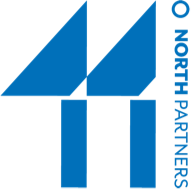Communications’ Role in Diversity & Inclusion and Why It’s More Important Than Ever
September 4, 2018
While diversity isn’t a new concept in the C-suite (communicators have been drafting diversity statements and developing recruitment videos for decades), we are in a new era of corporate commitment when it comes to diversity and inclusion.
The distinction between diversity (any dimension that can be used to differentiate groups and people from one another, such as age, gender, ethnicity, etc.) and inclusion (the result of inherent and acquired differences being socially acceptable and welcomed) has become increasingly clear in the workplace, moving many organizations to focus on the hard work of creating an environment that is truly welcoming and creates a feeling of belonging.
The business case is clear: According to Deloitte Insights, organizations with inclusive cultures are two times as likely to meet or exceed financial targets, three times as likely to be high-performing, six times more likely to be innovative and agile, and eight times more likely to achieve better business outcomes. Employees in these organizations describe feeling a sense of belonging due to a safe and open, fair and respectful atmosphere that makes them feel empowered.
Recognizing that the behavior of leaders can drive up to 70 percentage points of difference between the number of employees who feel highly included and the number of those who do not, leadership teams are engaging in unconscious bias training and developing personal action plans — a big step forward in driving meaningful top-down commitment.
And then there’s the influence of our current political atmosphere – which is fueling divisiveness and tribalism. Almost half of Americans between 18 and 36 say they believe CEOs have a responsibility to publicly express their opinion about social issues. With social justice stories dominating the headlines, there is additional pressure on organizations to behave according to their commitment to diversity and inclusion – both inside and outside their company walls.
So, what does all this mean for communications leaders who are charged with protecting and enhancing the organization’s reputation? For starters, it means we have an obligation, regardless of the depth of our organization’s commitment, to make the communications function itself inclusive – and to address our own unconscious biases in partnership with our teams. In addition to this foundational work, there are five steps for communications leaders to consider as they carve out the best ways to advance diversity and inclusion:
- Leadership matters. Communicators must be able to clearly articulate and effectively cascade the C-suite’s commitment, advise the CEO and other leaders on issues that may require the company to take a stand, and above all else, provide honest, direct counsel that helps the top leaders of the organization understand their vital role in building employee trust and creating a sense of belonging.
- Partner. The best communication teams are skilled at collaborating. Whether the organization has a dedicated diversity and inclusion function or a loosely formed network of people who care about the topic, communicators have an opportunity to bring clarity and focus to D&I efforts by helping partners understand how D&I messages fit into the larger company story, measuring response generated by D&I employee communication, and benchmarking how peer companies are telling their story.
- Tell stories. Engage employees in the organization’s D&I journey through authentic storytelling. Not everyone is on the same page when it comes to understanding and supporting diversity and/or inclusion. Communicators need to understand the audience to ensure messaging resonates not only with the supportive, committed employees but also those who are anxious, uncertain, fatigued or opposed. While no single story is likely to persuade someone with deep-seeded prejudice, considering the naysayer’s point of view can help fortify the story and make the “why” crisp and compelling.
- Take middle managers on the journey. These leaders have the most direct imprint on the daily experiences of employees. Communicators, in partnership with D&I, should design messages and training that help middle managers understand differences between diversity and inclusion — and between equality and equity — as well as the organization’s expectations for what it means to create a sense of belonging.
- Seek out diverse opinions. Be sure your communications function doesn’t exist in a bubble. Communicators who welcome voices different from their own into the communications planning conversation – and incorporate those perspectives into their work — create richer content that is likely to resonate with a broader audience, both internally and externally.
